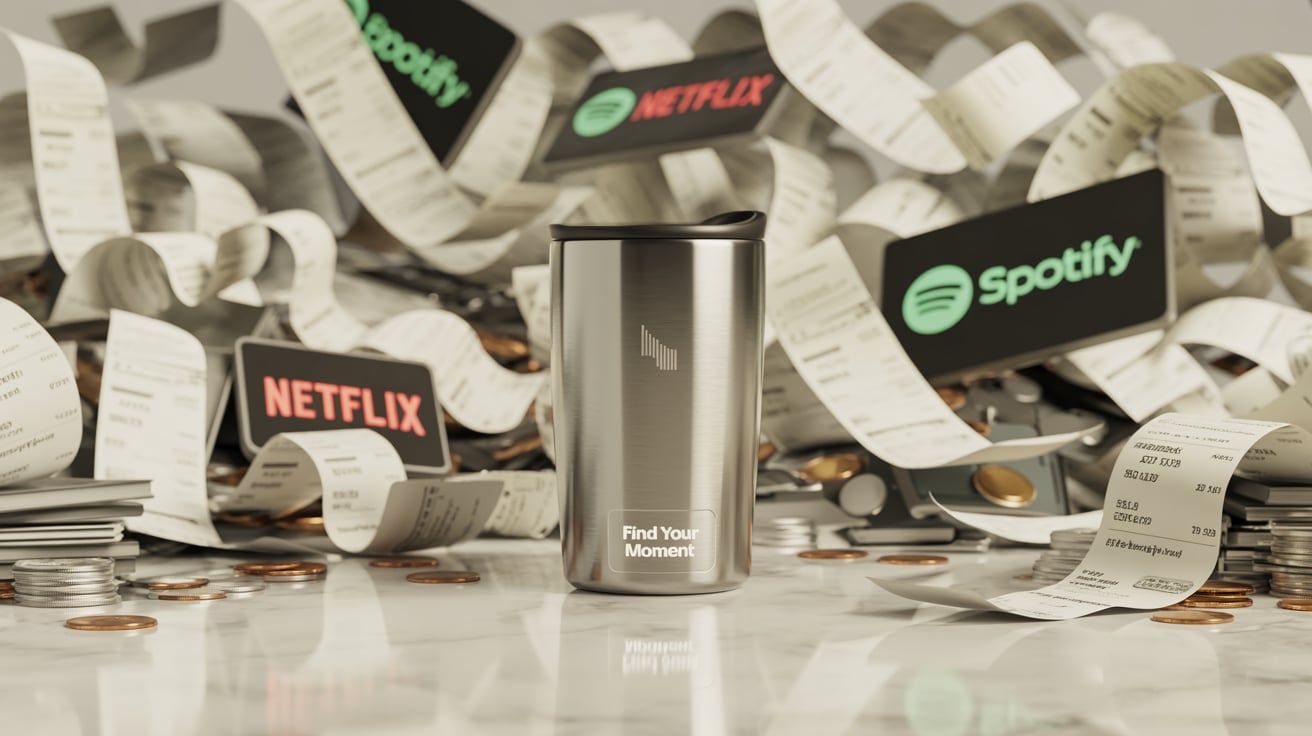The Sneaky Subscription Costing You $2,000+ Every Year
The Latte Factor: A Modern-Day Financial Drain
Remember the "latte factor"? It was all the rage a few years ago, suggesting that your daily coffee habit was secretly sabotaging your retirement dreams. While that still holds some truth, there's a new, far more insidious culprit draining our bank accounts: the subscription service. We're not just talking about Netflix and Spotify anymore. We're drowning in a sea of monthly fees for everything from meal kits and workout apps to cloud storage and premium news subscriptions. Individually, these charges might seem small, but collectively, they can easily add up to $2,000 or more per year – money that could be put towards significant savings or even a smart investment.
Think about it. How many subscriptions do you currently have? Take a moment to mentally list them. Now, estimate the monthly cost of each. Surprised? Most people are. The ease with which we sign up for these services, often with a simple click and a saved credit card, makes it incredibly easy to lose track of where our money is going. This "subscription creep" can silently erode your budgeting efforts and derail your long-term financial goals.
The Psychology of Subscription Addiction
Why are subscriptions so addictive? Several psychological factors are at play. First, there's the "sunk cost fallacy." We feel compelled to continue paying for a service, even if we're not actively using it, because we've already invested time and money into it. We tell ourselves, "I'll use it eventually," even as the monthly charge continues to hit our account. Second, many subscriptions offer a "convenience premium." We're willing to pay a little extra for the ease of having something delivered to our door or readily available on our devices. This convenience can be incredibly appealing in our busy lives, but it comes at a cost.
Furthermore, subscription models often exploit our fear of missing out (FOMO). Premium content, exclusive features, and early access are all designed to entice us to subscribe and stay subscribed. We don't want to be left behind or miss out on the latest trends, so we keep paying, even if we're not truly getting our money's worth. The clever marketing tactics employed by subscription services are designed to keep us hooked, making it even harder to break free from the cycle.
Unmasking Your Hidden Subscription Costs
The first step to reclaiming your financial freedom is to identify all your subscriptions. This requires a thorough audit of your bank statements and credit card bills. Don't just skim; look closely for recurring charges, even small ones. You might be surprised to find subscriptions you completely forgot about or services you signed up for during a free trial and never canceled. Create a spreadsheet or use a budgeting app to track each subscription, its monthly cost, and the date you signed up.
Once you have a comprehensive list, categorize your subscriptions based on their value and usage. Are you actively using the service? Does it provide genuine value to your life? Or is it something you signed up for on a whim and rarely use? Be honest with yourself. This is not about judging your spending habits; it's about gaining clarity and making informed decisions about where your money is going. This process is crucial for effective budgeting and understanding your overall financial picture.
The Great Subscription Purge: Cutting the Cord
Now comes the hard part: canceling the subscriptions you no longer need or value. Start with the easiest targets – the subscriptions you haven't used in months or the ones that provide minimal value. Don't be afraid to be ruthless. Remember, every dollar you save is a dollar you can put towards your savings or investment goals. Canceling subscriptions can feel liberating, like decluttering your financial life.
When canceling, be sure to follow the proper procedures to avoid future charges. Read the terms and conditions carefully to understand the cancellation policy. Some subscriptions require you to cancel a certain number of days before the next billing cycle. Take screenshots of your cancellation confirmation for your records. If you encounter any difficulties, contact customer support for assistance. Don't let a complicated cancellation process deter you from saving money.
Negotiating for Better Deals and Discounts
Before you cancel a subscription, consider negotiating for a better deal. Many companies are willing to offer discounts or special promotions to retain customers. Contact customer support and explain that you're considering canceling due to the cost. Ask if they have any available discounts or alternative plans that might better suit your needs. You might be surprised at how willing they are to negotiate.
Another strategy is to bundle your subscriptions. Some companies offer discounts when you bundle multiple services together. For example, you might be able to get a discount on your internet and cable bill by bundling them with your mobile phone service. Explore your options and see if you can save money by consolidating your subscriptions. Remember, a little negotiation can go a long way in reducing your monthly expenses and improving your overall finance.
The Power of Free Alternatives
Before subscribing to a paid service, explore free alternatives. In many cases, you can find free apps, websites, or resources that provide similar functionality. For example, instead of paying for a premium music streaming service, you could use a free ad-supported version or listen to music on YouTube. Instead of subscribing to a paid workout app, you could find free workout videos on YouTube or use a free fitness tracking app.
The internet is full of free resources that can help you save money on subscriptions. Do your research and explore your options before committing to a paid service. You might be surprised at how many free alternatives are available. By being resourceful and creative, you can significantly reduce your subscription costs without sacrificing quality or convenience. This is a key element of effective budgeting and responsible financial management.
Reinvesting Your Subscription Savings
Now that you've freed up some cash by canceling or negotiating your subscriptions, it's time to put that money to good use. Instead of letting it disappear into other expenses, reinvest it in your savings or investment goals. Consider setting up an automatic transfer from your checking account to your savings account each month. This will ensure that you consistently save the money you've freed up from subscriptions.
If you're feeling more ambitious, consider investing your subscription savings. Even small amounts can add up over time, especially when compounded through investment. Talk to a financial advisor to explore your investment options and create a plan that aligns with your financial goals. Whether it's saving for a down payment on a house, paying off debt, or building your retirement nest egg, reinvesting your subscription savings can help you achieve your financial dreams. This is where smart finance truly comes into play.
Building a Subscription-Free Future
The key to avoiding subscription creep in the future is to be mindful of your spending habits and to carefully evaluate each subscription before signing up. Ask yourself: Do I really need this service? Will I actually use it regularly? Is there a free alternative? By asking these questions, you can avoid impulse subscriptions and make more informed decisions about where your money is going. Building a strong budgeting foundation is essential for long-term financial success.
Remember, your financial well-being is in your hands. By taking control of your subscriptions and making conscious spending choices, you can free up thousands of dollars each year to put towards your savings, investment, and other financial goals. Don't let sneaky subscriptions drain your bank account. Take action today and start building a subscription-free future. Start by auditing your subscriptions *right now*. You might be shocked at what you find, and how much potential savings you uncover. Take control of your finance, and you'll be amazed at the results!



